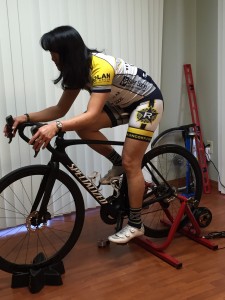Interest in running recreationally and competitively is experiencing a meteoric rise. The starting place for many interested in becoming a more serious runner is often a shoe store. Budding runners will invest in a new pair of running shoes believing the shoes will improve performance and prevent injury. Purchasing shoes sometimes includes a “gait analysis” performed by the shoe salesperson. A gait is a pattern of movement a person uses when they walk or run. A gait analysis is used to identify potential issues in someone’s form that can inhibit performance or lead to injury.
The problem is not all gait analyses are equal.
Gait analysis performed at a shoe store is designed to sell shoes
Though many believe the gait analysis they receive at a shoe store will give them insight in to becoming a better runner, that’s not always the case. Often, these analyses are done in the moment, where the clerk will ask the customer to jog in place, so they can identify which shoe will best fit the person’s form and gait.
Because this analysis is intended to sell shoes, the salesperson is typically focused only on the runner’s feet, not in context with what is happening above that might be contributing to foot mechanics. For example, they focus on the runner’s foot pronation (collapse of the arch) which is a normal function of foot mechanics during running, but not in excess. They will then suggest a shoe that can help to compensate for this excessive collapse to prevent over-use injury. Oftentimes, shoe store clerks receive little-to-no training other than to sell a shoe.
Running is a whole body sport
“When people go in to a shoe store to get a gait analysis, there’s usually no assessment of a person’s functional movement patterns, muscle length and joint ranges of motion,” explains Julie Young, an expert in endurance coaching, injury prevention/return to sport and performance training. “It’s like an investigative process. How we spend the majority of our day, injury and training history all contribute to our movement patterns. We have to collect and analyze all of the clues, put them together and come up with long-term solutions.”
Running, like gymnastics or swimming, is a whole body sport. It doesn’t rely solely on the feet but requires a body that’s stable and mobile. A comprehensive gait analysis, like those prescribed by sports medicine centers can give an aspiring competitive runner a visual impression (and an invaluable teaching tool) of the body’s break-down, which motivates the all-important activation, stability and mobility work.
A comprehensive analysis can also pinpoint specific strength and movement deficits in a runner’s gait. By identifying these problem areas, a professional can develop a training plan to improve the runner’s strength and movement deficits, while changing as little as possible in the individual’s gait. This can reduce a runner’s risk of injury, build strength and increase the runner’s performance.
Running can lead to injury
Unfortunately, many medical professionals only treat the victim (injured area) rather than above or beyond where the real criminal exists. That’s why it’s important to visit with a specialist in both sports and medicine.
Young, who was a top international cyclist for 12 years, conducts gait analyses as the director of Silver Sage Sports & Fitness Lab. She attends yearly courses at the University of Southern California’s Movement Performance Institute (MPI) as part of a fellowship. MPI, headed by Dr. Christopher Powers, conducts ongoing research on human biomechanics. Using state-of-the-art technology, Young has gained hands-on experience in identifying underlying movement impairments in a person’s gait.
“Through his extensive research, Dr. Powers is one of the few physical therapists I know who actually has a protocol for diagnosing injury (uncovering the source, not just the symptoms) and provides a methodical, systematic protocol to return injured runners to their sport,” Young said. “Many runners are looking for a quick fix. But unfortunately there is no silver bullet, and like anything worth achieving, return to running takes consistent investment.”
To identify potential problems, Young videos her clients running. Using frame-by-frame video analysis software, she’s able to identify exactly where underlying strength and movement deficits exist. She then creates an exercise protocol to improve those areas of weakness.
“For good or bad we are in an age of profuse, and often-times conflicting information, which can feel overwhelming, we want to help filter this information and provide our clients with credible, science-based tool,” said Young.


